Trash barrier buoys are becoming one of the most effective solutions for protecting rivers, lakes, canals, and eco-tourism areas. However, to ensure long-term efficiency and avoid unnecessary costs, investors need to understand the key factors before making a purchase. In this article, SIAM Brothers Vietnam provides a detailed guide to 5 essential criteria that will help you evaluate and select the right buoy system—ensuring durability, safety, and sustainable cost savings.
1. What Are Trash Barrier Buoys?
Trash barrier buoys are typically made from high-quality HDPE plastic, designed to float on the water surface and form an effective barrier against waste. They are widely used in rivers, lakes, canals, seaports, eco-tourism sites, and aquaculture areas.
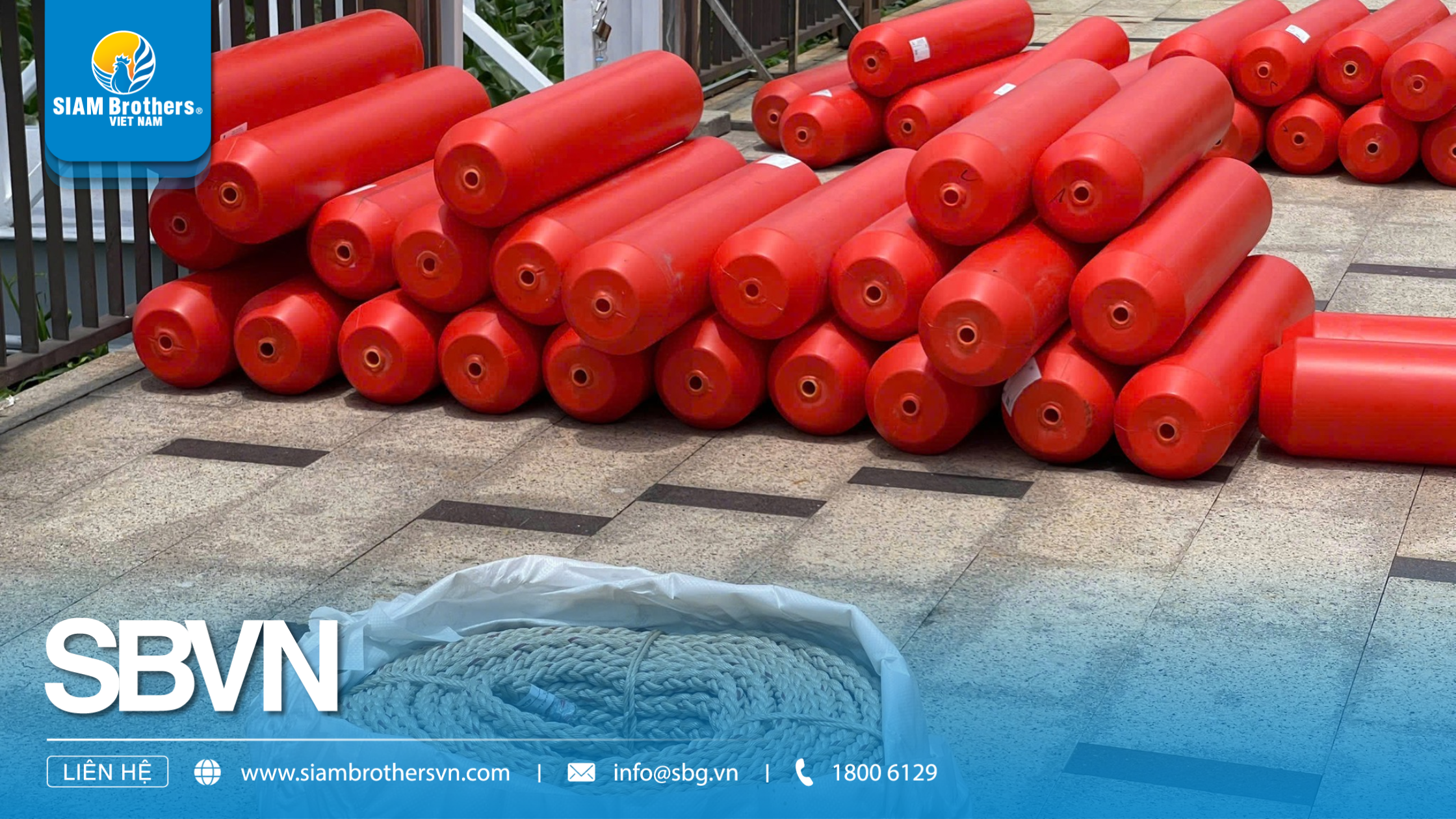
1.1. Common Structure
- Buoy body: Manufactured from UV-resistant HDPE plastic, durable and safe for the environment.
- Linking system: Connected with ropes, cables, or flexible joints for easy installation and adjustment to different terrains.
- Supporting accessories: Anchors, frames, and trash nets to enhance waste collection efficiency.
1.2. Main Functions
- Block floating plastic waste, branches, and organic debris on water surfaces.
- Reduce pollution, protect landscapes, and safeguard ecosystems.
- Support environmental management in hydropower plants, ports, and tourist destinations.
- Cost-effective solution for water surface cleaning.
- Helps projects, businesses, and local authorities improve their eco-friendly image.
- Aligns with sustainable waste management trends and international standards.
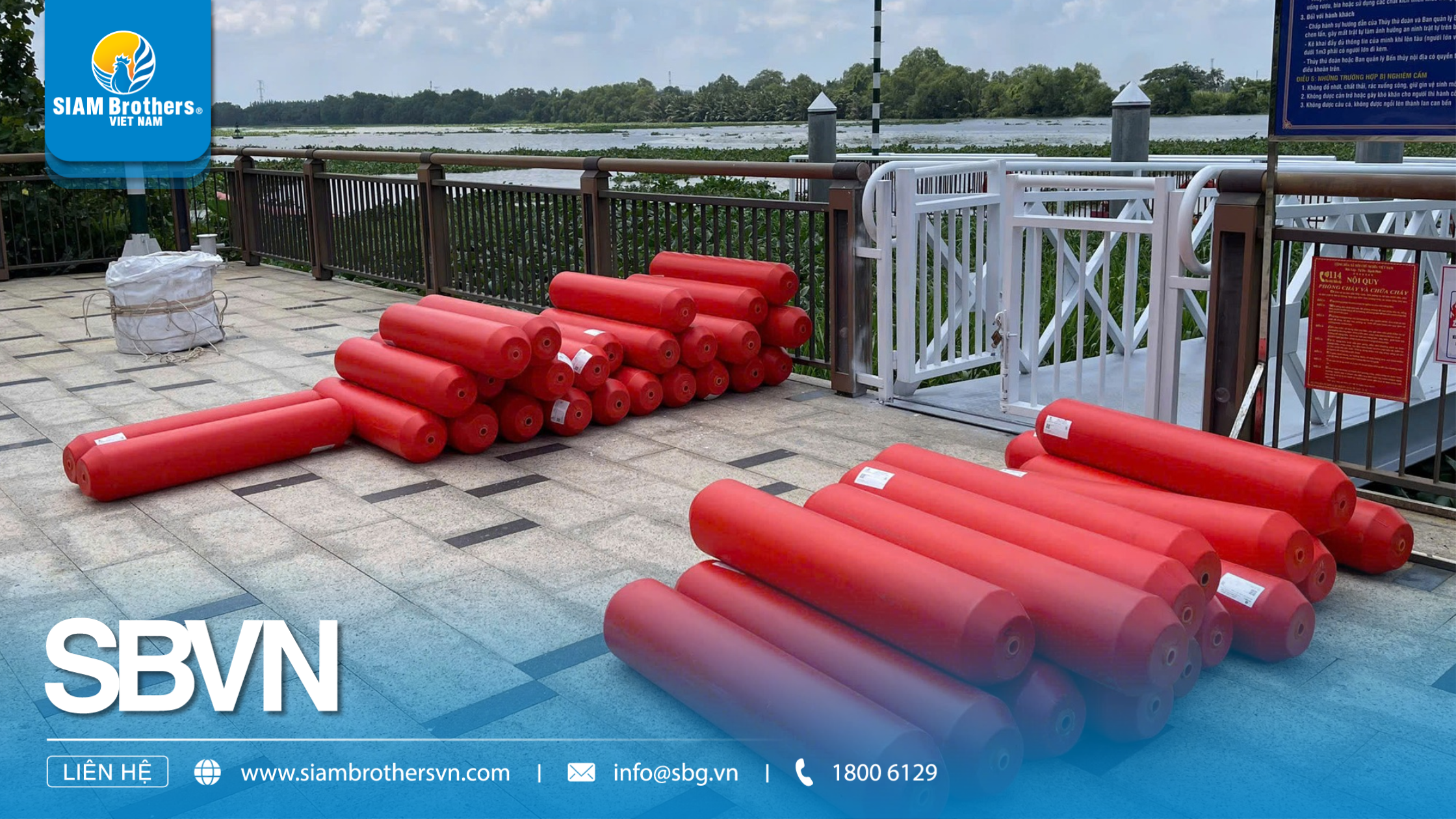
2. Why Choose High-Quality Trash Barrier Buoys?
2.1. Ensure Durability and Long Lifespan
- Made from virgin HDPE with UV and saltwater resistance.
- Lifespan of 10–15 years, minimizing replacements and repair costs.
2.2. Optimal Waste Blocking Efficiency
- Effectively captures plastic waste, leaves, and debris—even in strong currents.
- Keeps water surfaces clean, reduces secondary pollution, and cuts manual collection costs.
2.3. Environmentally and Human-Safe
- Free from toxic substances, safe for ecosystems.
- Prevents buoy breakage that could release microplastics into water sources.
2.4. Long-Term Cost Optimization
- Higher initial investment compared to low-quality buoys, but significantly lower maintenance costs.
- Provides sustainable economic benefits for projects from hydropower to eco-tourism.
2.5. Enhance Corporate Reputation and Professionalism
- Using standard-compliant trash barrier buoys demonstrates social responsibility.
- Builds trust with communities, partners, and environmental authorities.
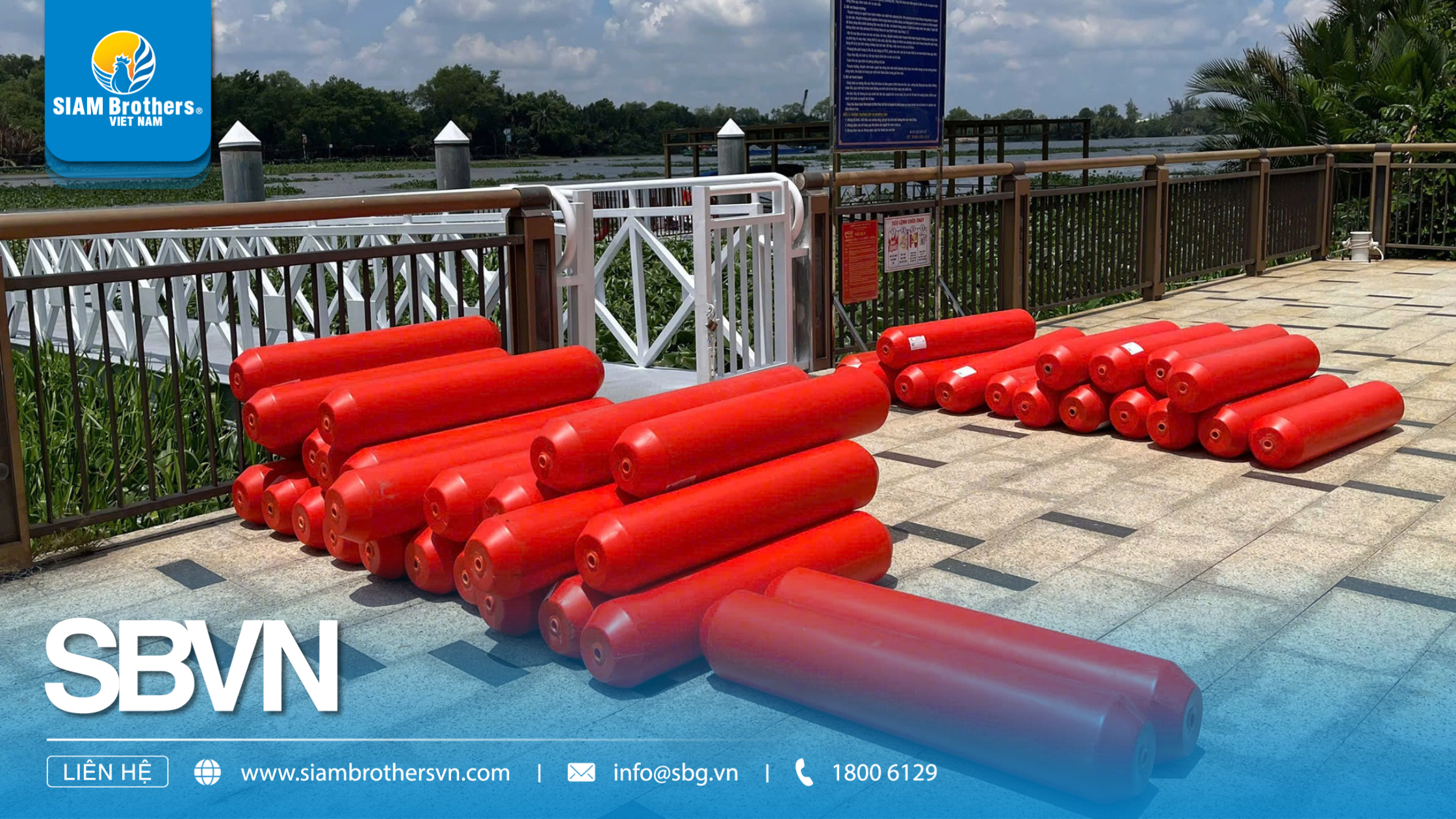
3. Top 5 Factors to Know Before Buying Trash Barrier Buoys
3.1. Material Quality
- Prioritize buoys made from virgin HDPE with UV resistance, strength, and water safety.
- Avoid recycled low-quality products prone to cracking and short lifespan.
3.2. Durability and Service Life
- A high-quality buoy can last 10–15 years in harsh environments.
- Long durability reduces replacement costs and ensures long-term investment efficiency.
3.3. Waste Blocking Capacity and Flexibility
- Requires a solid design with nets or flexible joints for effective waste capture.
- Can be installed in various terrains: rivers, lakes, canals, ports, and eco-parks.
3.4. Reputable Supplier
- Choose manufacturers with proven expertise and transparent quality certifications.
- Reliable companies like SIAM Brothers Vietnam provide end-to-end solutions, from consulting and design to installation.
3.5. Warranty and Technical Support
- A quality product should come with clear warranty terms.
- Strong after-sales support ensures smooth operation and long-term performance.
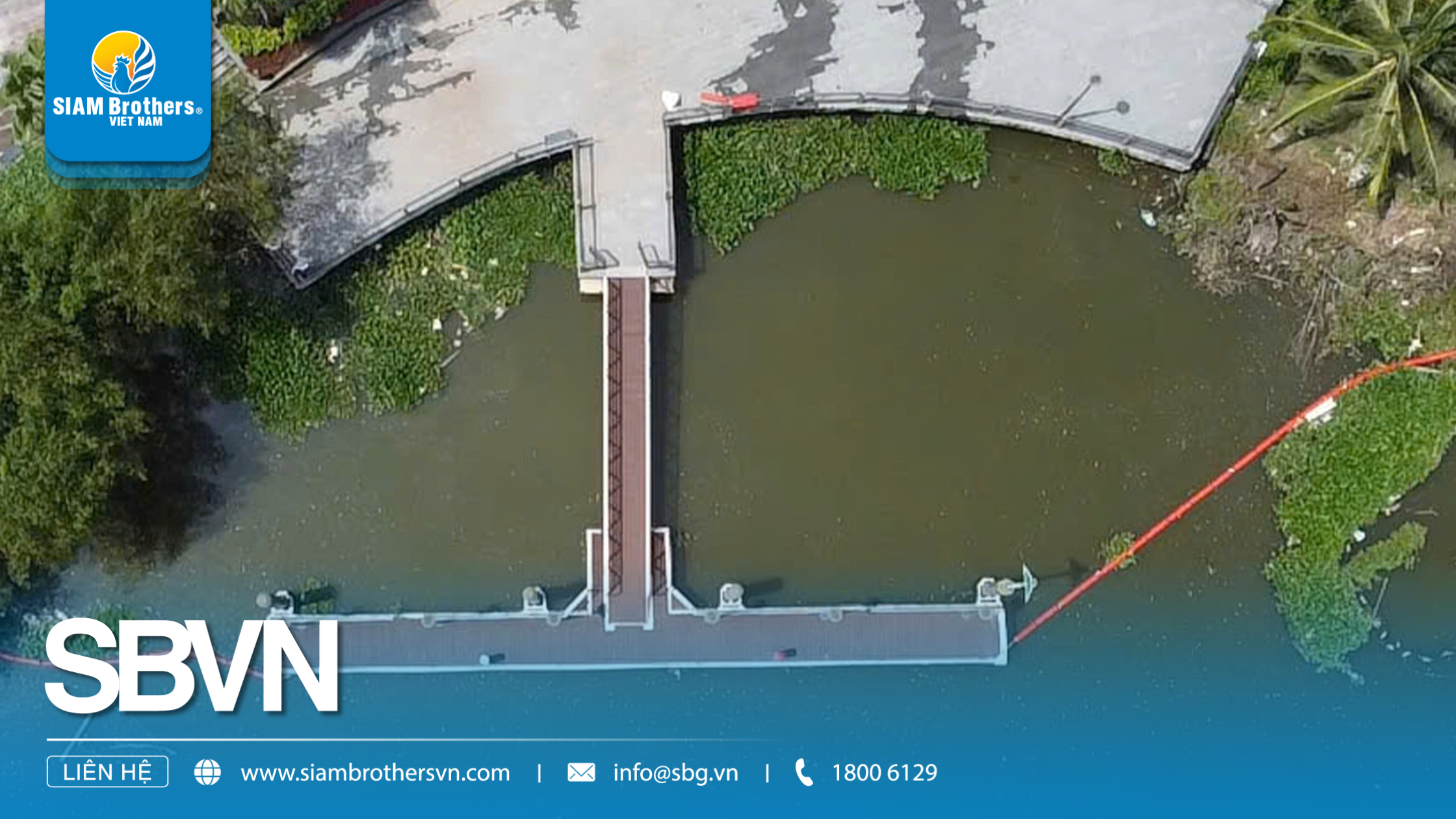
4. FAQ – Frequently Asked Questions About Trash Barrier Buoys
4.1. What materials are trash barrier buoys made from?
- They are primarily made from virgin HDPE plastic or premium materials with UV resistance, saltwater resistance, and high impact strength.
- Some models are reinforced with protective coatings to extend their lifespan in harsh environments.
4.2. What criteria should be considered when choosing trash barrier buoys?
- Strength & durability: Ensure safety in strong water currents.
- Size & design: Match the installation area.
- Modular connection capability: Allow easy expansion when needed.
- Reputable supplier: Guarantee quality with clear warranty policies.
4.3. Where can trash barrier buoys be applied?
- Rivers, lakes, and canals to block domestic waste.
- Aquaculture areas to maintain clean water.
- Seaports and eco-tourism sites to protect landscapes.
4.4. How much does it cost to invest in trash barrier buoys?
- The cost depends on size, material, and design.
- Small-scale projects may cost a few million VND.
- Large industrial waste barrier systems can cost tens of millions.
- Although the initial investment may be high, it saves long-term waste management costs.

4.5. Is the installation of trash barrier buoys complicated?
- Not at all. Thanks to the modular design, installation is straightforward.
- Small projects can be set up within a few hours.
- Larger systems may take 1–2 days.
- Trusted suppliers usually offer full support from site survey to installation.
4.6. Can trash barrier buoys withstand harsh weather conditions?
- Yes. HDPE plastic provides excellent UV resistance, saltwater resistance, and impact resistance.
- They are designed to operate stably under intense sunlight, heavy rains, storms, and strong water currents.
4.7. Can trash barrier buoys be reused or relocated?
- Yes. With modular joints, trash barrier buoys can be easily dismantled and relocated.
- This flexibility is particularly useful for short-term projects or when adjusting waste-blocking areas.
4.8. Do trash barrier buoys require regular maintenance?
- Yes. Periodic inspection and cleaning help extend buoy lifespan and maintain performance.
- Typically, only surface cleaning, joint checks, and removal of trapped debris are required.
4.9. How long do trash barrier buoys last?
- On average, 5–10 years depending on material quality and environmental conditions.
- With proper maintenance and professional installation, the lifespan can be even longer.
4.10. Why should you buy trash barrier buoys from SIAM Brothers Vietnam?
- Manufactured from premium HDPE plastic, meeting international standards.
- Available in multiple models and sizes, easy to install.
- Backed by a reputable manufacturer in the fisheries and environmental industry with proven quality.
- High-quality trash barrier buoys not only deliver technical efficiency but also ensure long-term investment value.
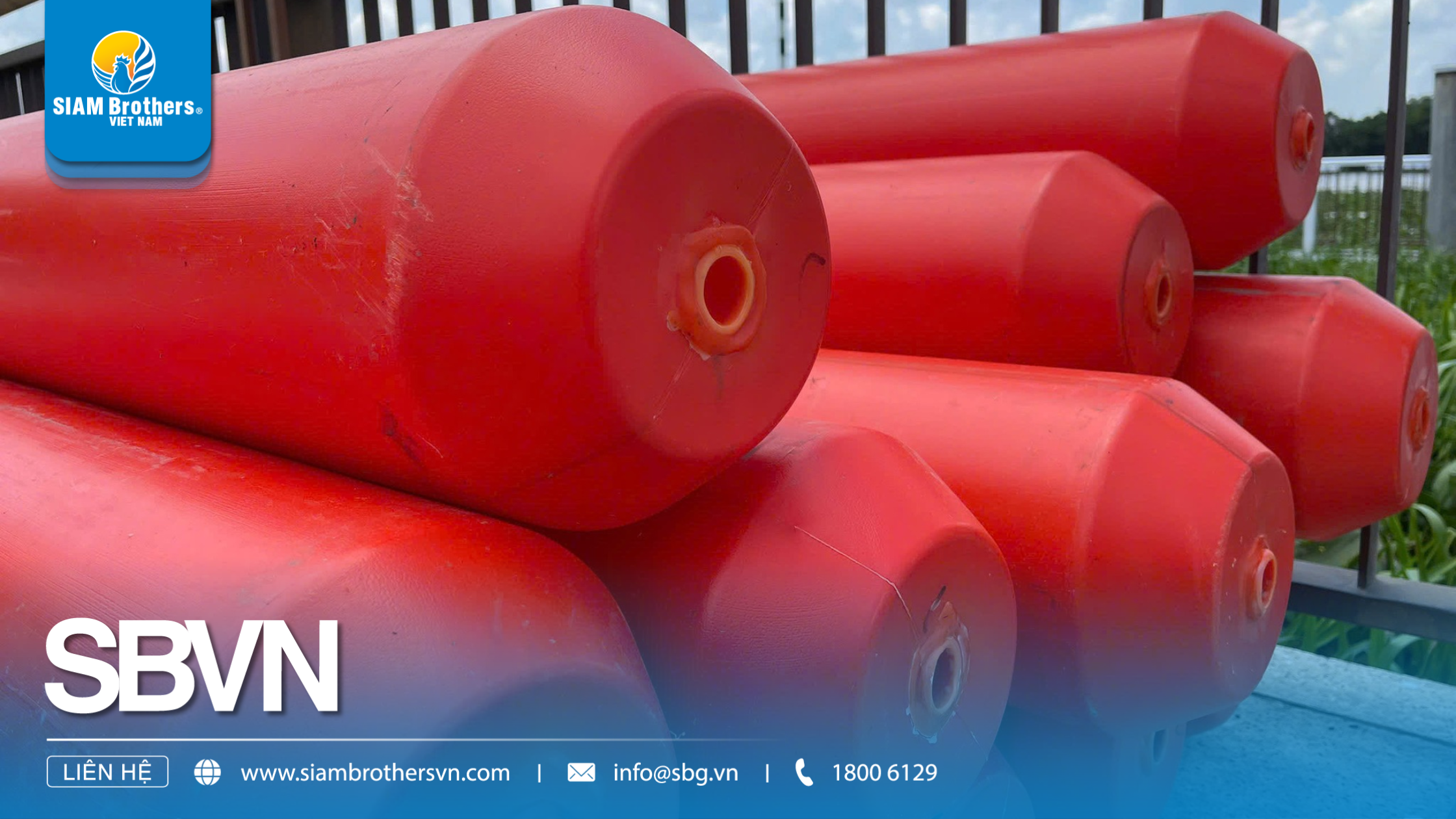
Choosing the right trash barrier buoys is crucial for effective waste control, water environment protection, cost savings, and long-term system durability. When investing, always consider material, design, durability, safety, and supplier reputation. A wise decision today will bring sustainable value to your project.
If you are looking for standard-compliant trash barrier buoys, contact SIAM Brothers Vietnam for expert consultation and the best solution tailored to your needs.
Source: SIAM Brothers Vietnam
Contact us:
► Address: 5th floor, VRG Building, 177 Hai Ba Trung Street., Xuan Hoa Ward, Ho Chi Minh City, Vietnam
► Hotline: 1800 6129
► Tel: (+84) 28 38 912 889
► Email: info@sbg.vn
► Follow us for more details at: Facebook - Zalo OA - Tiktok - Youtube - LinkedIn
Download SBVN ID app here:
► CHPlay
► Appstore







